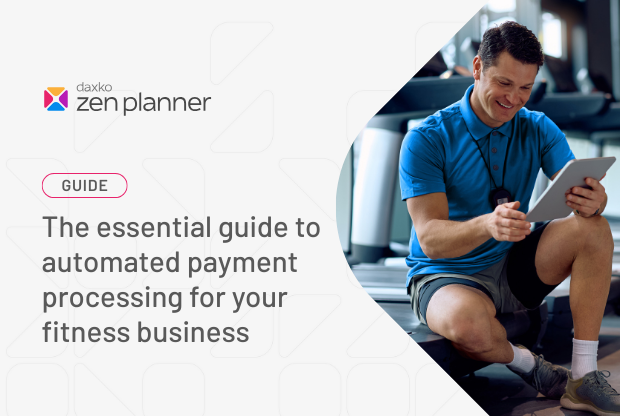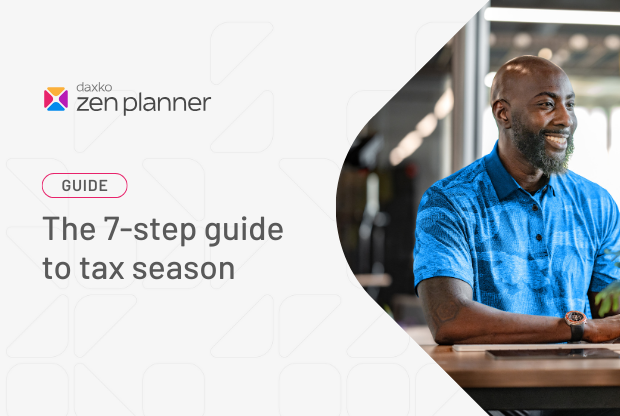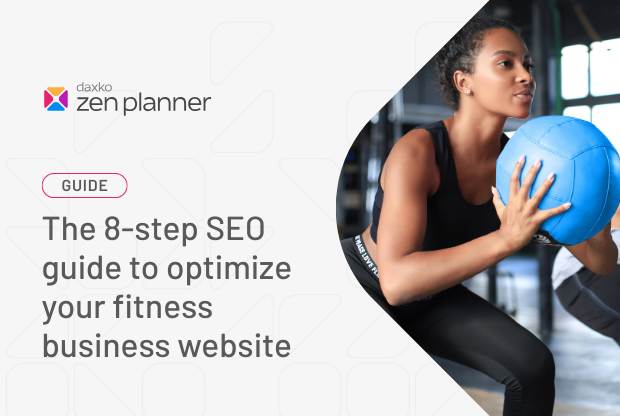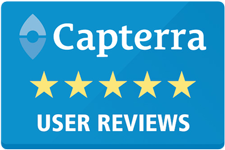How to create a business plan for your fitness business

How to create a business plan for your fitness business
Congratulations on taking the first steps to becoming a business owner! While this path may be tough at times, you don’t have to manage it alone. Our team of business and industry experts assembled this template to help you write your own business plan. To start you’ll need to do plenty of advanced research and document gathering. We recommend you read our template first and take notes on areas you need to research and gather more information. Once you’ve done that, you can sit down with our template and start writing.
But first, why would you want to go to the trouble of creating a business plan? Documenting your business information in the form of a business plan will benefit you in several ways. It will force you to think about your business in a comprehensive and strategic manner, which will help you identify smart ways to build your business and serve as an action plan moving forward. Your business plan will also help you if you need to seek funding, enter into a partner agreement or lease or buy commercial property for your gym. In all, it’s critical step in becoming a successful business owner and an endeavor worth undertaking.
Business plans are like resumes- every business plan will be different, but they all contain the same vital information. Some are longer than others, and they all focus on different aspects of a business. That means you don’t need to worry if your business plan varies slightly from some you might have seen before. As long as you cover the information listed below, you will have a solid business plan you can be proud of.
Some great ways to conduct research and gather information include completing a SWOT analysis, doing interviews and referencing resources provided by some of the big fitness organizations like the International Sports and Racquet Club (IHSA) and IDEA Fitness Association. Contacting your local Chamber of Commerce, fitness associations and realtor associations will also help you with your marketing analysis. If you decide you want more detailed examples of business plans or a little extra help, your local Small Business Administration will have plenty of free classes and resources for you.
The business plan
Executive summary
This section is a short summary of the key takeaways from the sections below. It’s normally best to draft this section last and write in the order your business plan is presented. Many readers will never make it beyond this page, so your job is to hook them by making it informative and interesting. You want to compel your reader to continue reading. This is a stand-alone piece, so don’t make reference to information that is presented later in your plan. Use third person language. This section can be as short as a few paragraphs or as long as a couple pages.
Company overview
This is where you’ll start to dive in to the description of your business, telling the reader who you are and what you do. Write this as if the reader doesn’t know your business, being very thorough. You’ll want to include the following topics and write in paragraph form, using bullets when needed. After this paragraph, the reader should understand where your business is now and where it’s going.
Legal structure of the business
Is your business a sole proprietorship, partnership or corporation?
Company mission & vision statement
Your mission statement is a short, action-oriented statement of purpose that remains unchanged as your business grows. Your vision statement is more aspirational than your mission statement and is a declaration of what your company intends to do or be.
Business goals & objectives
These will be unique to each business, but it’s always a good idea to make any goal SMART.
Products and services
Again, this will be unique to your business.
Target market
Be specific but succinct here. You will have an opportunity to develop this further in your strategic marketing section later.
Strengths and core competencies
In this section think about the core services you’ll provide that will be the stable base of your business. This is an important exercise because once you identify your core competencies, you can use them later as a roadmap and guide for tough business decisions.
Business registration
Depending on your location, there will be state and local business licenses and registrations you will want to gather and include here.
Market analysis
In the section you’ll tell your reader about your niche in the fitness industry and how you will ft into it. This is one of the more research heavy sections in your business plan, but if you fully build out the topics below you’ll have it covered.
Industry overview
Get information from your local Chamber of Commerce, realtor association and big fitness associations, like IHRSA, to create an accurate overview of your fitness industry. Be sure to include any projected growth or decline, as well as any projected changes that might disrupt your business.
Market size
Using the sources listed above and in the introduction, document the market size as the number of people who would be possibly interested in your business. Once again, include any projected changes. For instance, if you plan to have an after school program for kids and a new school is being built nearby, include that in your analysis.
Competition landscape
Using the information above and other information you’ve gathered, explain the amount of competition you face. Discuss this in terms of other fitness businesses offering the same products and services, as well as those that offer different services but still make up the complete picture of fitness options in your area.
Projected market share
Using the information above, discuss your expected market share in relation to the other fitness businesses in your area. Break this down again by market share against businesses offering the same services and then market share against all fitness businesses in your area.
Barriers to entry
Do you need to buy expensive equipment or have all your instructors certified under a particular program before opening your business? Think about this critically and make note of any potential roadblocks that could stand in your way when launching or growing your business. By making note of these possible barriers, you’ll be able to plan to address them.
Marketing plan
It’s a good idea to complete your marketing plan well after you’ve completed your market analysis because the former will inform the latter. This section outlines how you plan to let the world know about your business and how you will turn your prospects into customers. Things to cover include:
Branding
Will you have a logo, color or message for your athletes to identify with? If you need inspiration, take a look at how some of the more successful businesses have done it.
Target market
You touched on this briefly in your company overview. Now you want to build this concept out to include very detailed marketing personas. This will help you be a better marketer because it will allow you to tailor all your efforts to your specific target demographic(s). (You want to be very specific here- think the about hitting the bulls-eye on a dart board instead of just an outer ring).
Advertising and promotional plan
How do you plan to reach your customers? Include any plans to use social media, online tools, local and print advertising, as well as other ways you plan to attract new customers. If you need inspiration, we have an abundance of resources on our blog and resources page.
Competitive advantage and plan for differentiation
With fitness businesses on almost every corner, what will you do to stand out from the crowd? Is it a new product or service? Will you cater to a different student demographic? Or are your coaches better or well known? Think about what it is that will make you different and be sure to note it here and use it in your marketing messaging.
Operations & management plan
This is where you’ll document how your business will operate on a day-to-day basis. Where other sections of your business plan are strategic and forward looking, write this section with a daily operations perspective in mind. Things you should include are:
Staffing plans with associated job descriptions
If you have no plans at this time to hire anyone, then just skip this and the other items that are related.
Staffing classifications
If you plan to bring on coaches or office help, be sure they are appropriately classified to avoid employment law problems.
Pay and benefits
Future investors will want to know any agreements you have entered into, including salary and benefit agreements, so be sure to include that information and supporting documentation here.
Management team and reporting structure
What does your company reporting structure look like? This is a great place to use an organization chart to show reporting relationships.
Staff training plan
Do you need to re-certify your trainers and coaches yearly? Noting all certifications and training you need to provide for your team will help you stay on top of them when they come due and show any potential investors that you have it covered.
Business management or accounting software
Successful business owners and managers automate recurring tasks to save time and ensure task completion. Doing so frees up time that can be spent on more strategic business objectives. If you haven’t decided on a software provider, give this consideration. If you have one selected, be sure to note it here.
Payment processor and rates agreements
Payments processor terms and rates differ wildly, so be sure to note the processor you’ve selected and include a copy of your contract. If you haven’t made that decision, we have an ebook that will help you sort all that out.
Financial projections
You’ve told the story of your business and the environment in which it will operate. Now it’s time to wrap it up nicely by demonstrating its financial viability. To do this, you’re going to provide financial projections, and any actual financial documents to finish this final section of your business plan.
Projected financials
You will want to share all projected business cash inflows and outflows for several years. Take your projections to the point of showing business stability. We recommend Again Fasters’ video tutorials for creating cash flow projections. They are comprehensive and will help you create realistic financial projections.
Actual financial documents
If your business has been operating, you’ll want to include income statements, balance sheets and cash flow statements for up to five years.
Breakeven analysis
If your business hasn’t hit its break-even point, be sure to highlight this projected date for hitting this point with your financial projections.
Long-term financial goals
You can close this section with a summary of long-term financial goals. As we said before, this step will be helpful when you get to the point of seeking funding, as well as when you pull out your business plan from time to time to review your progress.
How Zen Planner can support your fitness business
You now have all the key points you need to write a solid business plan for your future fitness business. Remember, business plans vary from business to business. There is no required length or page count, and the longest plans aren’t necessarily the best. Thoroughly planning for your business, and expecting issues before they arise can help reduce headaches in the future.
Create a plan that is right and true for your business, and it will guide you for years to come. As you continue to build your fitness business, be sure to check out our library of business tools and resources. We’ve got something for every stage of your business. We wish you great success!







